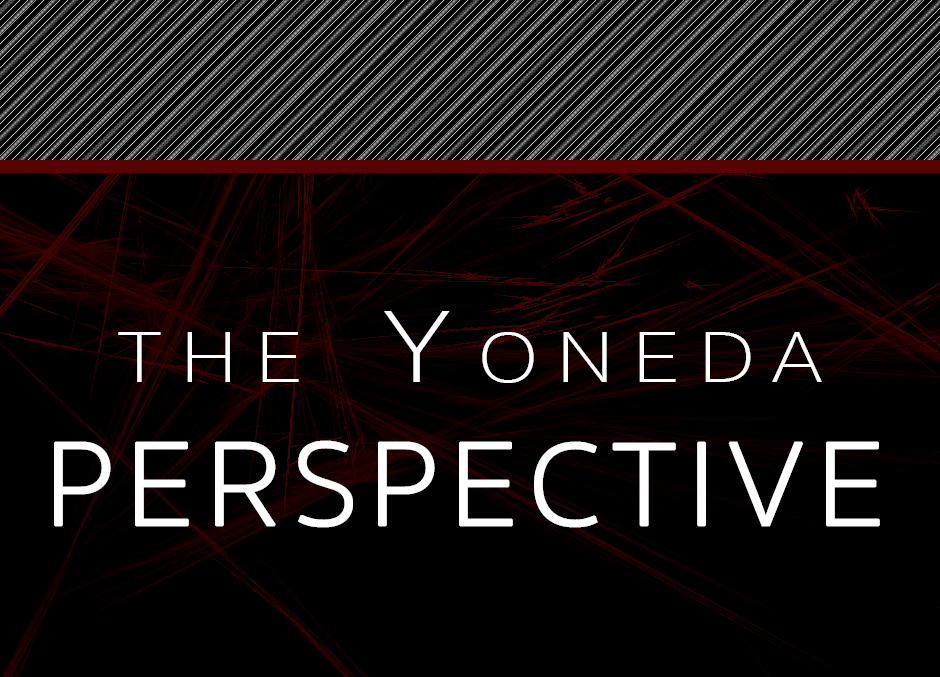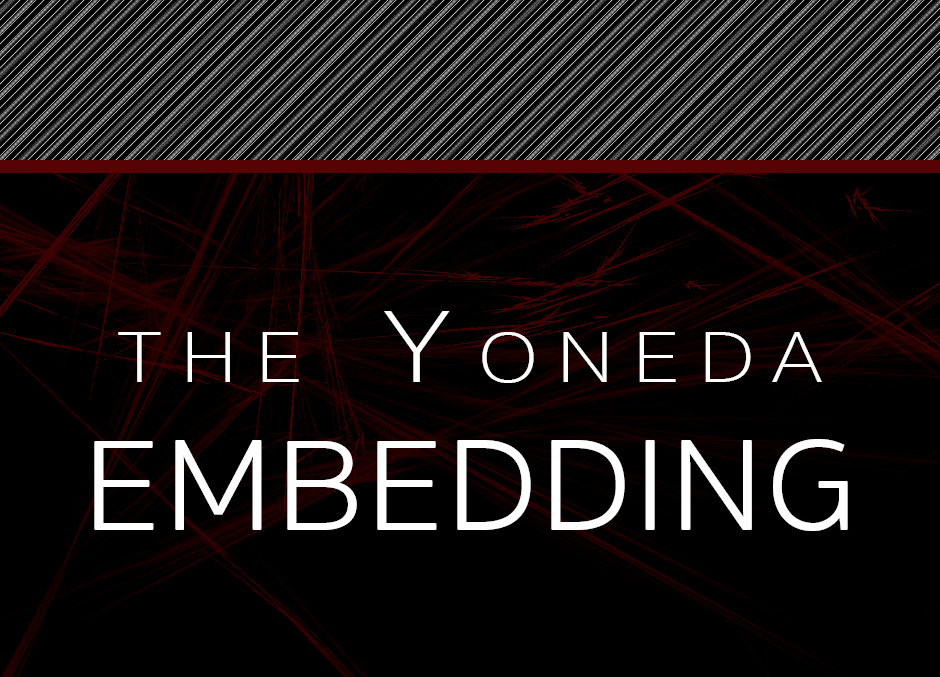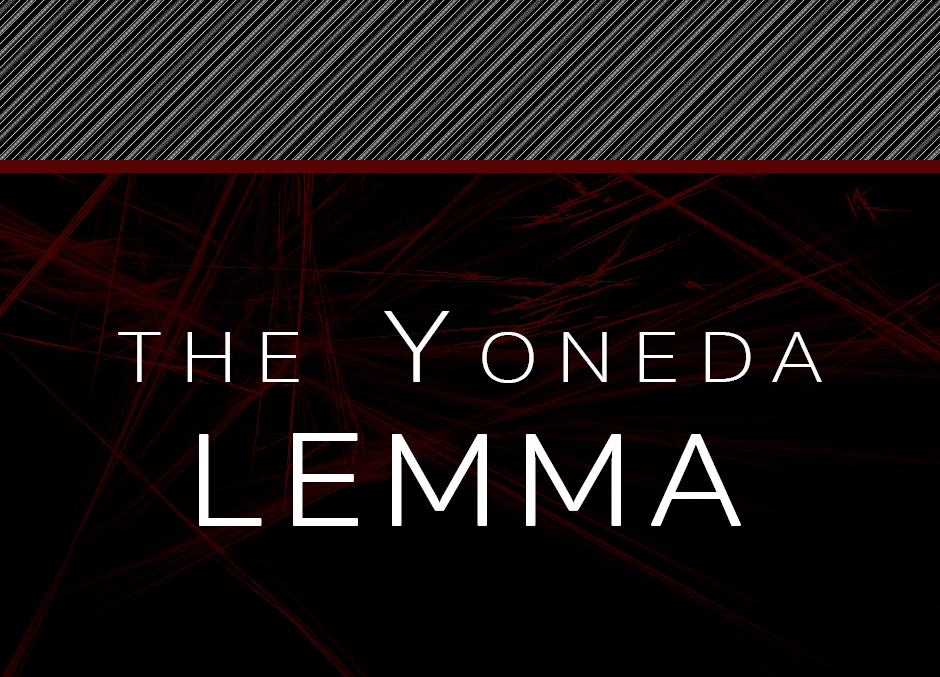The Yoneda Perspective
In the words of Dan Piponi, it "is the hardest trivial thing in mathematics." The nLab catalogues it as "elementary but deep and central," while Emily Riehl nominates it as "arguably the most important result in category theory." Yet as Tom Leinster has pointed out, "many people find it quite bewildering."
And what are they referring to?
The Yoneda lemma.
"But," you ask, "what is the Yoneda lemma? And if it's just a lemma then - my gosh - what's the theorem?"

Before answering, I'd like to motivate this result by taking a leisurely stroll through two of its corollaries. Actually, I'll start by saying I have no business strolling anywhere. A category theorist is qualified to showcase the glittering, multifaceted diamond that is the Yoneda lemma. I am not. But I like to tell you about things that I like, and I like the Yoneda lemma. So here we are!
Now I could simply tell you the corollaries I have in mind, and I could simply tell you the lemma. But as Joseph Maher once said,
Math is the reverse of comedy.* The anti-joke. We'll tell you the punchline first, then laboriously explain to you why it was the right punchline.
So first I'll tell you a punchline - a summary of two corollaries of the Yoneda lemma. I've mentioned it previously on this blog, but my goal in this series is to anchor it to a more formal footing - i.e. laboriously explain why it's the right punchline. And it is the notion that
mathematical objects are completely determined by their relationships to other objects.
Let's call this the Yoneda perspective. It short, it says that if you want to understand objects (sets, groups, topological spaces, and so on) then in the words of Barry Mazur, you'll want to understand "the network of relationships they enjoy with all the other objects of their species." We've explored this idea in a couple of posts already - The Most Obvious Secret in Mathematics and The Sierpinski Space and its Special Property - so I won't elaborate here. (Do check them out if you haven't already! You can think of those posts as prequels to this one.) But I will mention that the Yoneda perspective motivates a viewpoint that some mathematicians - and ever increasingly this blog** - have adopted, namely the viewpoint that
the properties of a mathematical object are more important than its definition.
Why adopt this viewpoint? Because sounding off definitions is easy enough: The Cartesian product is..., the free group generated by a set is..., the quotient topology is.... But definitions don't always tell the whole story. Does the product naturally come with maps into or out of it? If the generating set of a free group sits inside another group, are the two groups related in some way? What do continuous functions out of a quotient space look like? These questions search for properties - defining characteristics - of an object. And the answers materialize once we widen our viewing angle and examine the object from the perspective of each object in category in which it lives.
What do I mean?
Suppose you want to discover properties about an object $X$. Now imagine putting yourself in the shoes of another object $Y$. Then ask, "What does $X$ look like from $Y$'s vantage point?" Now walk over to another object $Z$, put yourself in its shoes and ask, "How about now? What does $X$ look like from over here?" Continue to do this until you've analyzed $X$ from the perspective of every object in the category. Afterwards, you'll have gleaned a great deal of information about $X$.
It's like the clip on the right. From one side, the sculpture looks like an elephant; from another, it looks like two giraffes. But neither angle gives a full description. To really understand the sculpture, we should view it from all possible vantage points. The same idea holds in category theory: more vantage points give more information. And here's the upshot: the Yoneda lemma implies:
all vantage points give all information.
This is the essence of the Yoneda perspective mentioned above, and is one reason why categorically-minded mathematicians place so much emphasis on morphisms, commuting diagrams, universal properties, and the like. (Have you noticed?) It's all about relationships! Of course, this is all just intuition. What's the actual mathematics? What are those two corollaries? What did I mean by "...objects are completely determined by..."? What is a "relationship between two objects?" How do we consider the "vantage point of all objects in the category"? And how exactly is this captured by the Yoneda lemma?
These are the questions we'll answer next week.
In the mean time, want to brush up on category theory? Here are a few places to start:
What is Category Theory, Anyway?
What's a Category?
What's a Functor?
What's a Natural Transformation?

* So a mathematician is a cocomedian? (What does that make a comathematician?)
**See Exhibit A and Exhibit B and Exhibit C and Exhibit D and Exhibit E, for instance.

In this series:



